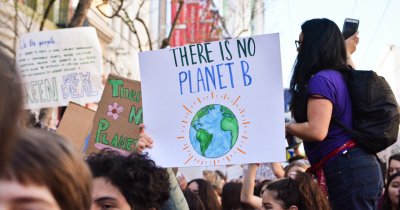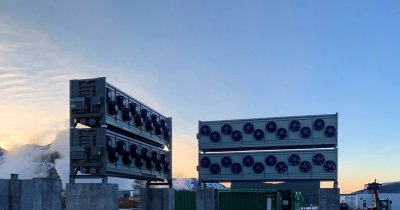CNN Business reports that the disposable nature of their paper cups and the plastic ones make it so that when they are thrown away they either end up in landfills or on the streets as litter.
The recycling process isn't solving the problem entirely either, company officials say.
Michael Kobori, Starbucks chief sustainability officer said that "our cup is ubiquitous, and we love that, but it is also the ubiquitous symbol of a throwaway society."
He thinks that the best option to fight this habit is to get rid of the disposable cup altogether, which would be "the holy grail", according to him.
This is why before 2025, the company wants customers to either bring their own cups, or borrow a ceramic reusable to-go mug from their local Starbucks.
The company will let customers bring their own cup by the end of next year in the United States or Canada to slowly start their environmentally friendly program.
This doesn't mean that the classic cups won't be available at coffee shops, but they will be the less attractive option, even though it is the one customers are most used to.
Starbucks will implement the borrow-a-cup program that will enable customers to pay a deposit for a durable cup that they'll bring back after use.
Amelia Landers, a vice president of product experience whose team is responsible for sustainable packaging at Starbucks, expects customers to adhere to the company's efforts for sustainability.
"We developed a new cup that had a very low environmental footprint, was lightweight polypropylene, ultimately recyclable and could replace 100 single-use disposable cups," she said.
The company tested this sort of program last year in Seattle
For the test, each customer paid 1 dollar each time they used the durable cup and when they were done with it, they took it to a smart bin in the coffee shop and took their dollar back.
Kim Davis manages the coffee shop where the experiment is conducted and said that customers were really excited to try the program once they found out what it was about.
She said that "the excitement and engagement was really high among my customers and my [employees]."
Starbucks explains that the cups are being gathered and cleaned by a third party company, so that baristas don't have to worry about it themselves.
Customers are encouraged once more to bring their own cups when they order a coffee, but this could prove to be a complicated process when they order at drive-throughs or via the Starbucks app.
The company also plans to raise the fee for personal cup uses, as Landers explains, "from 10 cents to 50 cents."
In order to figure out how to solve the personal cup problem, Starbucks started developing solutions through mock up stores at its innovation center.
One option the company explores is to let customers drop their personal cups at an early stage of the drive-through and by the time they get to pick up their order, it should be ready.
Another option is for baristas to make the drinks and store them in containers and pour them in the personal cups when customers come at the pick-up point.
According to Landers, the company is "in the middle of all that work."
The company needs to make sure that these processes are as seamless as possible and that they don't put too much pressure on baristas either, as it could cause other problems, both at an employee and a customer level.
 Mihai - Cristian Ioniță
Mihai - Cristian Ioniță












Any thoughts?